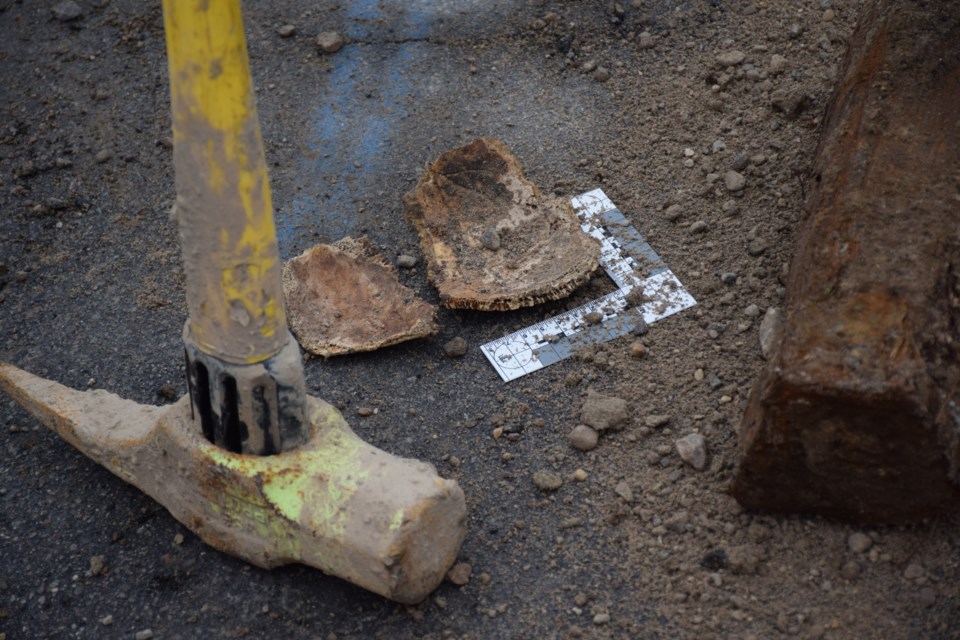The skeletal remains of some of Guelph’s earliest settlers are set to go under the microscope at McMaster University.
Megan Brickley – a McMaster anthropology professor, and a Tier 1 Canada research chair who specializes in paleopathology – has been loaned 115 human skeletons recovered from the Baker Street development lot over the years to perform research.
The hope is to get a better idea on the life and death of those who were buried in the all-faith cemetery between 1827 and 1853.
She has a hefty amount of experience. Brickley has studied human remains from across Canada, as well as Europe.
“I was obviously delighted to be approached,” she said.
Remains from the cemetery were disinterred and moved to Woodlawn Memorial Park.
In 2005, while fixing a sinkhole on Baker Street, a work crew found a human skeleton.
The began a decade-long saga where more remains were discovered.
“It was generally poor people, and people who didn’t have clear connections, who ended up in this burial ground,” Brickley said.
“Quite a few of them came from Europe, and had lives that had undergone many changes before they died.”
She believes the research could bring a better understanding on working and living conditions in what was then Upper Canada.
Some of the things Brinkley is looking for include evidence of anemia, scurvy and other illnesses and injuries, including those who may have been working at the age of nine, while still growing and developing as human beings.
She plans to cross reference it with findings from other spots in Canada and around the world.
But it won’t be something that begins immediately.
The remains are being housed at McMaster at the moment. Brickley was loaned the remains for five years.
Brickley is on a sabbatical, and has another research project she will return to later this year. She anticipates it’ll be about three years before “some serious research” can begin on the Baker Street remains.
This, she said, will give her time “to have found out more about (the Baker Street collection).”
“And to hopefully have had some input from community members to formulate plans for key questions that could be asked regarding those whose remains were excavated,” Brickley said. “And give me an opportunity to seek some funding.”
On top of that, Brickley said it will give time for researchers to come on board to help out, once the work gets underway.
Throughout the process, she said she plans to be in contact with the City of Guelph, and plans to present an annual report on everything being done.
“I am hoping to be able to keep in contact with community members,” Brickley said, adding she has already been approached by family members of those who were buried at the site, and given helpful materials.
“I think it’s important this isn’t done in a vacuum, and that questions that people might have, and information they can provide are actively integrated into what we’re doing.”
